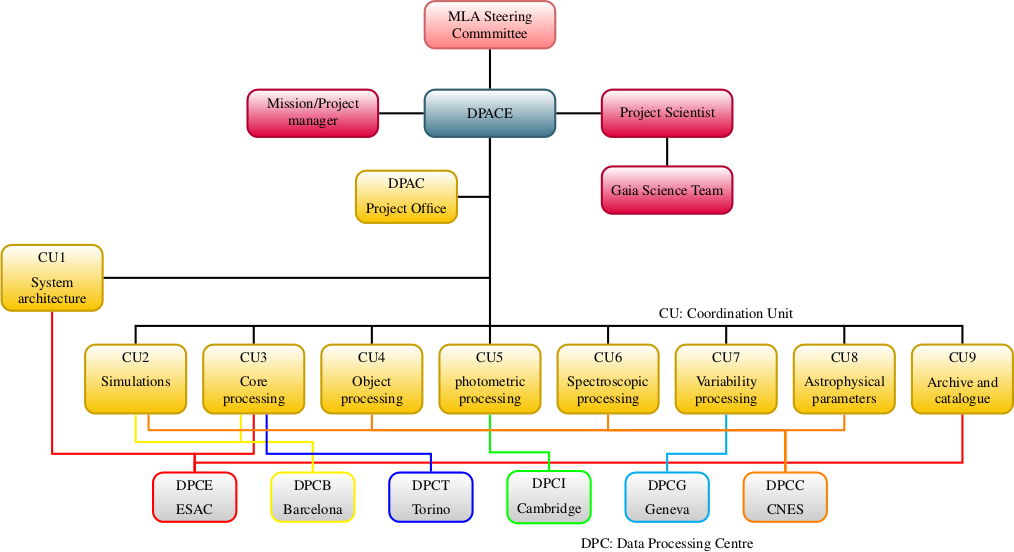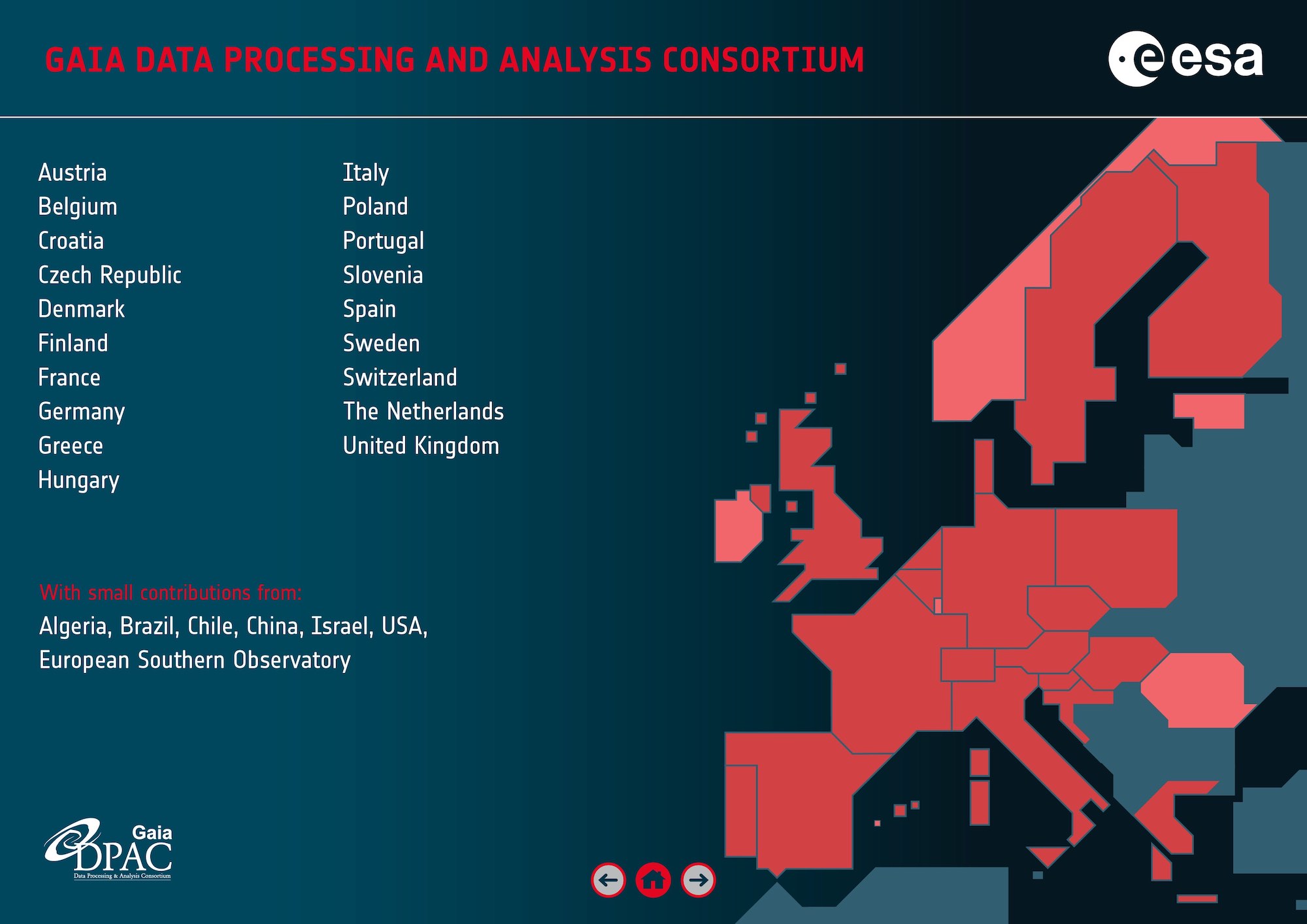DPAC Consortium - Gaia
The DPAC Consortium |
|
|
A large pan-European team of expert scientists and software developers known as DPAC (Data Processing and Analysis Consortium) is responsible for the processing of Gaia's data with the final objective of producing the Gaia Catalogue. Drawing its membership from over 20 countries, the consortium brings together skills and expertise from accross the continent, reflecting the international nature and cooperative spirit of ESA itself. DPAC has been in place since 2006 and has the task to develop the data processing algorithms, the corresponding software, and the IT infrastructure for Gaia. It also executes the algorithms during the mission in order to turn the raw telemetry from Gaia into the final scientific data products that will be released to the scientific community. |
|
|
|
|
| Gaia DPAC - 2017 - all countries in dark blue participate in Gaia DPAC | Gaia DPAC - 2020 - all countries in dark red participate in Gaia DPAC |
|
The responsibilities of the Gaia Data Processing and Analysis Consortium are:
For a general introduction and overview of DPAC the original proposals for DPAC and its CU9 are very useful. A list of participating institutes can be found here.
StructureThe Consortium is structured around specialized sub-units know as Coordination Units (CUs). Each CU is responsible for developing the scientific algorithms and software corresponding to a particular sub-system of the overall Gaia data processing system. The software developed by the CUs is run by one of the data processing centres (DPCs). These centres host the computing hardware and provide software engineering expertise to support the CU software development work. Each DPC supports at least one CU. |
|
 |
|
Each CU is led by a CU-leader and the DPCs are led by a DPC-manager. The consortium as a whole is led by the DPAC Executive which consists of the CU leaders, a representative from the CNES DPC, and the DPACE chair and deputy chair. The Gaia Project Scientist and the Gaia Mission Operations Manager have the status of observer on the DPACE. The day to day management of the DPAC operations is delegated to the DPAC Project Office which is led by the DPAC Project Coordinator. The Project Coordinator has a standing invitation to the DPACE meetings.
The DPAC is funded through national funding agencies of the participating ESA member states. These funding agencies have signed a multilateral agreement (MLA) with ESA which commits all parties to fund the DPAC effort up to the completion of the final Gaia catalogue (see more details on the release schedule page). The DPACE regularly reports to the MLA Steering Committee which consists of representatives of ESA and the partner funding agencies.
DPACE
DPACE is the interface for DPAC to the scientific community (through the Gaia Science Team) and to ESA and industry partners in the Gaia project. Many of the day to day interface tasks are performed by the DPAC Project Office. The current composition of the DPACE can be found here.

Contributions to the Gaia DPAC consortium for Gaia Data Release 3 in 2022. Countries in darker red contribute directly to Gaia DPAC. Countries in lighter red are member states of the European Space Agency, but not directly involved in Gaia DPAC.
- Removed a total of (6) style text-align:center;
- Removed a total of (2) style text-align:justify;
- Removed a total of (1) style float:left;
- Removed a total of (1) style float:right;
- Removed a total of (1) border attribute.
- Removed a total of (1) cellpadding attribute.
- Removed a total of (1) cellspacing attribute.








































 Sign in
Sign in
 Science & Technology
Science & Technology


